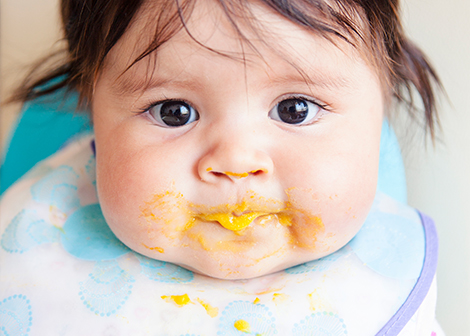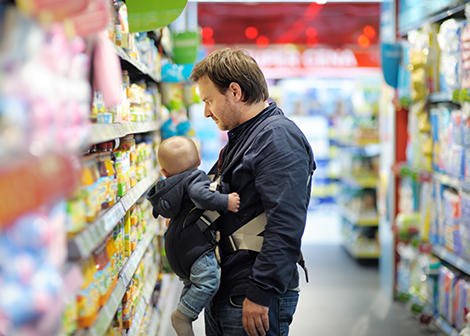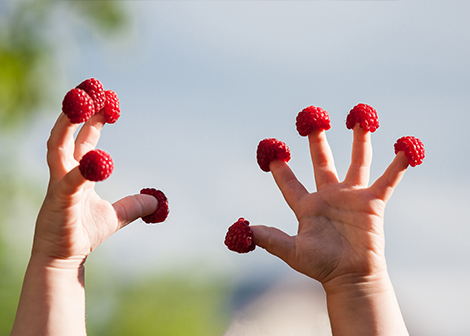Preparation and cooking
- Wash your hands with soap thoroughly under running water.
- Ensure the bench is clean and utensils have been washed in hot soapy water.
- Wash vegetables or fruit.
- Peel (if required) and chop vegetables/fruit into small pieces.
- Place into a saucepan with a small amount of water. Or put a little water into a microwave safe bowl.
- Boil the water in the pot, once boiling, add the chopped vegetables.
- Gently simmer with a lid on or cook in the microwave until very soft. This may take about 10 minutes on the stove but you may have to experiment in the microwave to find the right amount of time.
- Allow to cool slightly.
- Drain the vegetables in the colander.
- Place in a bowl and mash with a fork, hand blender or food processor until the food is soft and smooth. As your baby gets older (about 7-9 months) the texture should become lumpier.
- Mix with boiled water, breast milk or formula until you reach the consistency your baby needs.
- Only put the amount of food you think your baby will eat in a bowl, unused food should be discarded as the bacteria from your baby’s mouth can cause an upset tummy.
- If food is not to be eaten immediately, store in fridge until needed (food can be kept in the fridge for 24 hours).
- Make sure food has cooled before feeding it to your baby. To test the temperature of the food, wash your hands thoroughly then put your finger in the food to check that it is not too hot for your baby. It’s best not to test the temperature by eating the food yourself as this may spread germs from you to your baby.
Storage
Any extra food that has been made can be kept in a sealed container in the fridge for the next day or frozen for use within 3 months. It always a good idea to date food as you can forget when items were put in the fridge or freezer.
You can freeze extra food in ice block containers. When these are frozen the food can be transferred to plastic bags or containers in the freezer.
Frozen foods should be thawed in the refrigerator overnight or under cold water in an airtight plastic wrapper or bag, stirring the contents from time to time and changing the water every 30 minutes. Foods can also be thawed in a microwave oven, using the defrost setting.
General tips
If travelling, prepared food should be carried in an esky with an ice pack and on arrival at your destination placed in a refrigerator. Food should be used within 4 hours.
You do not need to add any sugar or salt to your baby’s food, so if you are preparing the whole family’s vegetables/fruit take out the baby’s portion before adding any salt or sugar.
Your baby can progress from soft smooth textured food to foods of different textures quite quickly. Gradually include coarse mash, grated, minced and finely chopped foods. At around 9 months foods can be of a soft diced texture.
Want to know more?
The Raising Children Network – Child-friendly fruit and vegetables: in pictures






